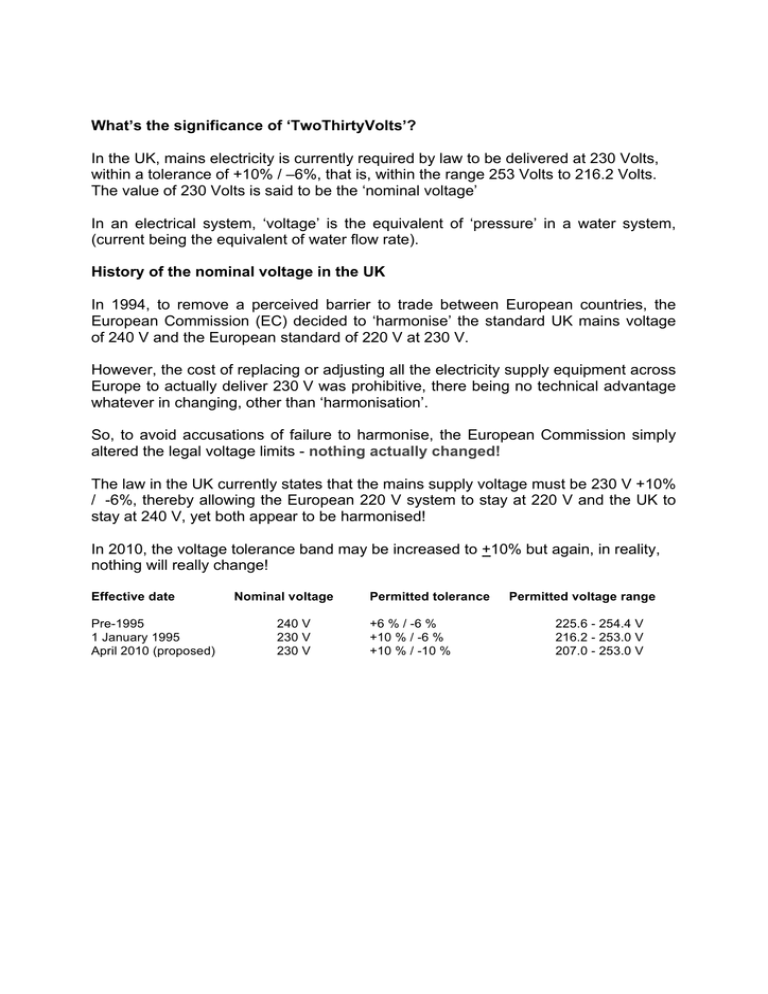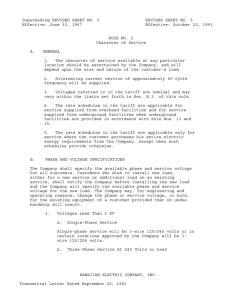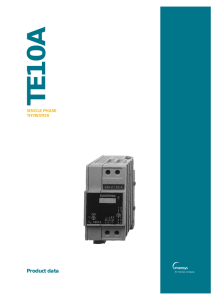FINAL - Explanation - 230 Volts - Wording - 14
advertisement

What’s the significance of ‘TwoThirtyVolts’? In the UK, mains electricity is currently required by law to be delivered at 230 Volts, within a tolerance of +10% / –6%, that is, within the range 253 Volts to 216.2 Volts. The value of 230 Volts is said to be the ‘nominal voltage’ In an electrical system, ‘voltage’ is the equivalent of ‘pressure’ in a water system, (current being the equivalent of water flow rate). History of the nominal voltage in the UK In 1994, to remove a perceived barrier to trade between European countries, the European Commission (EC) decided to ‘harmonise’ the standard UK mains voltage of 240 V and the European standard of 220 V at 230 V. However, the cost of replacing or adjusting all the electricity supply equipment across Europe to actually deliver 230 V was prohibitive, there being no technical advantage whatever in changing, other than ‘harmonisation’. So, to avoid accusations of failure to harmonise, the European Commission simply altered the legal voltage limits - nothing actually changed! The law in the UK currently states that the mains supply voltage must be 230 V +10% / -6%, thereby allowing the European 220 V system to stay at 220 V and the UK to stay at 240 V, yet both appear to be harmonised! In 2010, the voltage tolerance band may be increased to +10% but again, in reality, nothing will really change! Effective date Pre-1995 1 January 1995 April 2010 (proposed) Nominal voltage 240 V 230 V 230 V Permitted tolerance +6 % / -6 % +10 % / -6 % +10 % / -10 % Permitted voltage range 225.6 - 254.4 V 216.2 - 253.0 V 207.0 - 253.0 V







